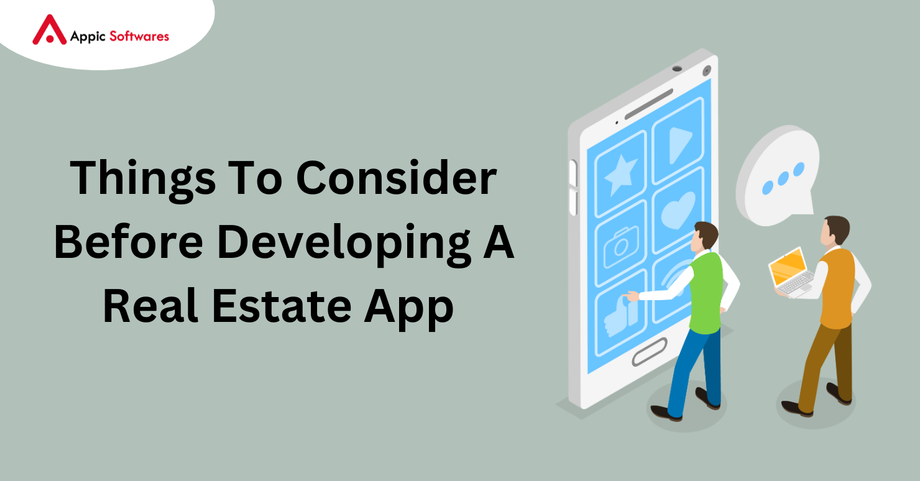The real estate industry is undergoing a digital revolution. Mobile apps like Zillow and Trulia have transformed how people search for properties, with convenience and accessibility at the forefront. If you're brimming with ideas for a real estate app, this blog post equips you with the knowledge to navigate the planning stages effectively.
Before diving headfirst into development, here are crucial considerations to ensure your app stands out in a crowded marketplace:
1. Define Your Niche and Target Audience:
The real estate market is vast and diverse. Trulia focuses on residential properties, but there's room for specialization. Identifying your niche caters to a specific audience and sets the foundation for your app's unique value proposition. Here are some niche ideas to consider:
- Luxury Real Estate: Target high-end buyers with exclusive listings, high-quality virtual tours, and curated property collections.
- Student Housing: Focus on features like proximity to universities, roommate matching, and lease term flexibility.
- Rental Properties: Cater to renters by offering filters for pet-friendly properties, in-unit laundry, and short-term lease options.
- Commercial Properties: Target businesses searching for office spaces, retail locations, or warehouses.
- Foreclosure Properties: Assist buyers looking for deals on distressed properties by providing detailed property information and foreclosure timelines.
2. Research the Market and Competition:
Understanding the real estate app landscape is crucial for success. Analyze established apps like Trulia, Zillow, Realtor.com, and Apartments.com. Here are some key aspects to research:
- Functionalities: Identify the core functionalities offered by these apps, including search options, property details, and user interaction features.
- Pricing Models: Analyze how these apps generate revenue, whether through freemium models, subscriptions, lead generation, or in-app advertising.
- Target Audience: Understand who these apps cater to, their strengths and weaknesses, and any gaps in the market your app can address.
3. Planning and Feature Scoping:
Now it's time to map out the features that will make your app stand out. Here are some essential features to consider, keeping in mind your chosen niche:
- Advanced Search Functionality: Allow users to search for properties based on various criteria, including location, price range, property type, size (bedrooms/bathrooms), amenities (parking, gym, pool), keywords, and even school districts (relevant for families).
- Detailed Listings with High-Quality Media: Integrate high-resolution photos, informative descriptions, key features, and virtual tours (optional for a premium tier) to showcase properties effectively.
- Interactive Maps: Implement a user-friendly map interface with filters to refine searches visually and pinpoint desired locations.
- Seamless User Accounts: Enable users to create accounts for saving favorite listings, receiving alerts for new listings matching their criteria, and managing search preferences.
- Integrated Communication Channels: Facilitate communication between users and agents/landlords through direct messaging or in-app chat functionalities.
- Push Notifications: Send users timely alerts about new listings, price changes, open house events, or expiring leases (for rentals).
- Reviews and Ratings System: Consider a user-driven review system for agents and properties (while considering legal implications) to enhance user trust and transparency.
4. Prioritize User Interface (UI) and User Experience (UX) Design:
A user-friendly interface is paramount for real estate apps. Here are key considerations for a positive user experience:
- Clean and Intuitive Design: Strive for a clear and uncluttered interface with easy-to-understand menus, icons, and search functions.
- High-Quality Images: Showcase properties with professional-looking photos that are attractive and informative. Consider 360-degree photos or virtual tours for a more immersive experience.
- Clear and Concise Information Presentation: Present property details in a well-organized and easy-to-read format, allowing users to compare options effectively.
- Responsive Design: Ensure the app is optimized for different screen sizes and devices (smartphones, tablets, desktops) for seamless user experience across platforms.
5. Choose Your Development Path:
There are two main approaches to app development:
- In-House Development: If you have a team of experienced developers on board, you can build the app from scratch. This offers complete control over the development process but requires significant technical expertise and resources.
- Outsourced Development: Partnering with a reputable mobile app development company leverages their expertise and saves on development time. Carefully evaluate potential partners based on their experience building real estate apps, their portfolio of successful projects, and their development methodology.

